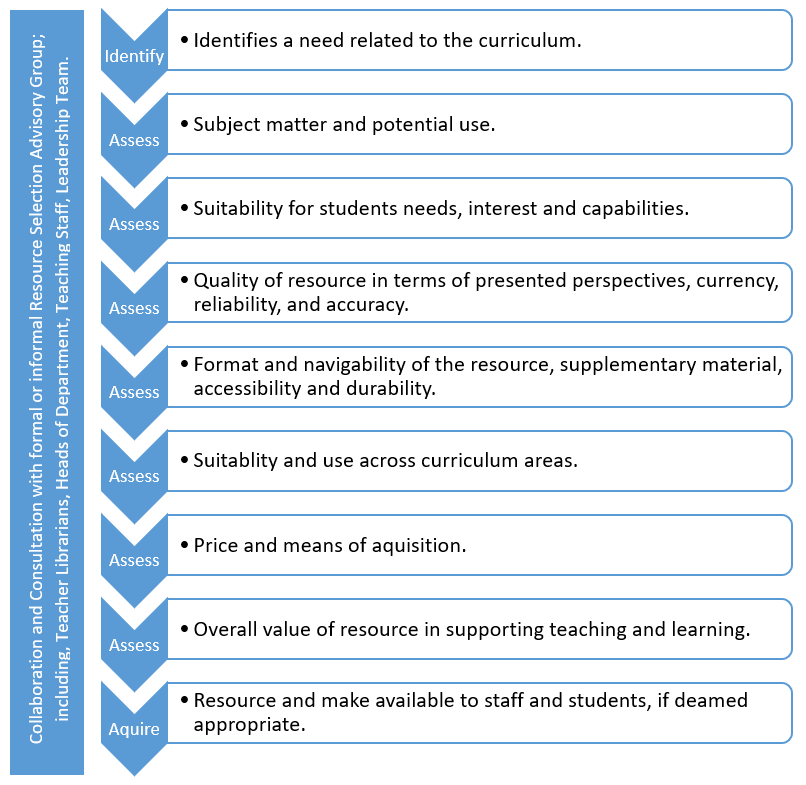The role of the Teacher Librarian and expertise required is different to that required by all teachers. Teacher Librarians are required to possess additional skills in curriculum leadership, as well as expertise in literacy in all its forms; traditional, information and digital. According to the Australian School Library Association, as well as being trained teachers, Teacher Librarians are curriculum leaders, information specialists, and information service managers (2012). A Teacher Librarian also requires mentoring skills needed to support both students and teachers. As well as having a bird’s eye view of the curriculum and school, Teacher Librarians are educators of information literacy, organisers and creators of resources, and advocates and innovators of technology and social learning (Herring, 2017). The Education Directorate concludes, “Teacher librarians combine a command of 21st century pedagogies and curricula with expertise in information science: the analysis, collection, classification, manipulation, storage, retrieval, movement, dissemination, and protection of information” (2016, p.3). This differs from that of the expertise of other teachers, as the focus of classroom teachers is perhaps narrower, and they do not necessarily have the skills or time to manage resources on a large scale or assist students and others in the development of a range of literacy skills.
Teacher Librarians must also be masters in collaboration to support teachers and students. To successfully support library clients, Teacher Librarians must stay abreast of changes in curriculum and delivery methods across the school. Effective ways to collaborate across the school community include; participation in departmental meetings, presentation of Professional Development opportunities, and participation in active networking across the school community. Without being seen in the school community, Teacher Librarians will find it very difficult to develop and maintain a relevant and useful collection suited to the needs of staff and students. Specific ways to open the collection acquisition process include; inviting staff to peruse resources prior to purchasing, working with staff to develop Assignment Help Pages and identify gaps in the collection related to specific tasks and units of work, and informing staff of the changes occurring within the collection including acquisition and weeding. Ultimately, the school community should be involved and have a voice in the process of collection development, as an integral part of the role of the Teacher Librarian is to support the teaching and learning activities that occur within schools.
Furthermore, to develop a collection that is engaging and useful, students must be involved in the selection of resources. According to Evans, when considering resources, students’ Normative needs, Felt needs, and Comparative needs must be met (2008). In particular, Felt needs refer to what students want to read. If this need is met, a school library will be able to better cater for their clientele and will likely be more successful (Evans, 2008). Students may have the opportunity to select books for purchase during book fairs, submit requests, speak directly and informally with library staff or vote for the acquisition of specific books. Additionally, libraries may undertake a needs analysis of the student cohort (Isebe, 2015).
Ultimately, the final decision to acquire resources may lie with either the Head Teacher Librarian or if a contentious resource that may provide controversial viewpoints or perspectives that go against school ethos or values, the decision should lie with the Deputy of Teaching and Learning or the Headmaster. Additionally, if the resource is to support specific teaching and learning activities for an assessment task or learning experience, the decision may lie with the Head of Department or teacher who requires the resource. Teacher Librarians are in an advantageous position to offer support and advice for specific resources and are in the position to approve the purchase of resources; however, they are not an island and must work in collaboration and support of the whole school community. Thus, it is clear that the decision to acquire certain resources is a shared process.
References
Australian School Library Association. (2018). What is a teacher librarian? Retrieved from http://www.asla.org.au/advocacy/what-is-a-teacher-librarian.aspx
Education Directorate. (2016). School libraries: The heart of 21st century learning. Retrieved from https://www.education.act.gov.au/__data/assets/pdf_file/0020/916301/School-Libraries-21st-Century.pdf
Evans, G. E. (2008). Reflections on creating information service collections. In K. Haycock & B. Sheldon (Eds.), The portable MLIS (pp. 87 –97). Westport, Connecticut: Libraries Unlimited.
Herring, J. (2017). The future role of the teacher librarian. Connections, 100, 10-11. Retrieved from http://www2.curriculum.edu.au/scis/connections/issue_100/print_complete_issue/print_issue_100.html
Isebe, M. (2015). Effective selection and organization of information resources in school library. International Journal of Library and Information Science Studies, 1(1), 27-33. Retrieved from http://www.eajournals.org/journals/international-journal-library-information-science-studies-ijliss/vol-1-issue-1june-2015/
[Forum Reflection: Module 2.2]
